AFRICA
Is there space for hydrogen in the just energy transition?Aug 26, 2021

Image: Pixabay.
A just energy transition within the Global South context doesn’t just mean changing the energy source from brown to green, but often means creating energy access in the first place.
A newly released TIPS policy brief into the relationship between energy access and poverty and the necessary energy transition brewing around the world, suggests that addressing the lack of access to electricity could help create the necessary change.
The International Energy Agency in its Financing Clean Energy Transitions in Emerging and Developing Economies report says the world’s energy and climate futures are increasingly hinged on whether these economies can manage their transitions successfully.
Have you read?
Link between just energy transition and energy poverty
Emerging and developing nations need help to fund the energy transition
While the world does have enough money to manage the necessary transition (according to the report), the money isn’t making its way to where it is needed. This is despite the fact that in many cases it is easier for emerging and developing economies to develop green energy sources from scratch rather than make the same mistakes developed nations have already made with brownfields developments.
While Africa may be considered energy poor by most metrics (the World Bank earlier this year said close to 85% of sub-Saharan Africa lacks access to clean cooking, accounting for 35% of global access deficit) it is enriched with renewable resources as well as the metals required by the technological processes to produce green hydrogen.
Could green hydrogen boost Africa’s just energy transition?
Hendrik Malan, CEO at Frost & Sullivan Africa, sees hydrogen as a key building stone in addressing sub-Sahara Africa’s electrification challenge. “Select countries in the region already have infrastructure in place which can be leveraged to take advantage of green hydrogen for both production and export.”
Given the attributes and pace of development of the sector, Malan believes it is critical that Africa creates a conducive R&D and investment environment to drive local applications for hydrogen. For him, this starts with an enabling policy environment: “Without a local market and commercial ecosystem, it would be challenging to consistently attract large scale investors due to the capital intensive nature of the sector.”
He thinks South Africa is at least ten years away from developing a functioning hydrogen economy, if that enabling policy environment is first created.
Malan will moderate a roundtable on hydrogen on 1 September, during which he will discuss with expert panellists the kinds of policies and support mechanisms Africa would need in place to foster the development of the sector.
“Chemical storage systems such as hydrogen are considerably easier, cheaper and can be stored for longer periods than battery energy storage systems, which generally have higher production costs and geopolitical complications. With Africa’s renewable energy opportunities, would the advancements in hydrogen and storage technology enable Africa to fully utilise these resources and supply the world with large quantities of green hydrogen for instance?” asked Malan.
MoUs between developed nations with aggressive decarbonisation targets who want to use hydrogen and emerging markets in Africa are a sign of traction in the market. Whether this results in Africa as a net exporter of hydrogen or creator of more electricity for own consumption is anyone’s guess. ESI
A just energy transition within the Global South context doesn’t just mean changing the energy source from brown to green, but often means creating energy access in the first place.
A newly released TIPS policy brief into the relationship between energy access and poverty and the necessary energy transition brewing around the world, suggests that addressing the lack of access to electricity could help create the necessary change.
The International Energy Agency in its Financing Clean Energy Transitions in Emerging and Developing Economies report says the world’s energy and climate futures are increasingly hinged on whether these economies can manage their transitions successfully.
Have you read?
Link between just energy transition and energy poverty
Emerging and developing nations need help to fund the energy transition
While the world does have enough money to manage the necessary transition (according to the report), the money isn’t making its way to where it is needed. This is despite the fact that in many cases it is easier for emerging and developing economies to develop green energy sources from scratch rather than make the same mistakes developed nations have already made with brownfields developments.
While Africa may be considered energy poor by most metrics (the World Bank earlier this year said close to 85% of sub-Saharan Africa lacks access to clean cooking, accounting for 35% of global access deficit) it is enriched with renewable resources as well as the metals required by the technological processes to produce green hydrogen.
Could green hydrogen boost Africa’s just energy transition?
Hendrik Malan, CEO at Frost & Sullivan Africa, sees hydrogen as a key building stone in addressing sub-Sahara Africa’s electrification challenge. “Select countries in the region already have infrastructure in place which can be leveraged to take advantage of green hydrogen for both production and export.”
Given the attributes and pace of development of the sector, Malan believes it is critical that Africa creates a conducive R&D and investment environment to drive local applications for hydrogen. For him, this starts with an enabling policy environment: “Without a local market and commercial ecosystem, it would be challenging to consistently attract large scale investors due to the capital intensive nature of the sector.”
He thinks South Africa is at least ten years away from developing a functioning hydrogen economy, if that enabling policy environment is first created.
Malan will moderate a roundtable on hydrogen on 1 September, during which he will discuss with expert panellists the kinds of policies and support mechanisms Africa would need in place to foster the development of the sector.
“Chemical storage systems such as hydrogen are considerably easier, cheaper and can be stored for longer periods than battery energy storage systems, which generally have higher production costs and geopolitical complications. With Africa’s renewable energy opportunities, would the advancements in hydrogen and storage technology enable Africa to fully utilise these resources and supply the world with large quantities of green hydrogen for instance?” asked Malan.
MoUs between developed nations with aggressive decarbonisation targets who want to use hydrogen and emerging markets in Africa are a sign of traction in the market. Whether this results in Africa as a net exporter of hydrogen or creator of more electricity for own consumption is anyone’s guess. ESI
Germany eyes world's cheapest green hydrogen from Namibia amid global 'race for best sites'
Europe’s largest economy closes partnership deal with African nation, which hopes to produce renewable H2 at prices as low as $1.8/kg

Namibia has huge space and a small population.
Europe’s largest economy closes partnership deal with African nation, which hopes to produce renewable H2 at prices as low as $1.8/kg

Namibia has huge space and a small population.
Photo: Wolfgang Kaehler/LightRocket via Getty Images
25 August 2021
By Bernd Radowitz
Germany plans to import huge volumes of what it claims will be the world's cheapest green hydrogen under a pact with Namibia that further widens a global dash to secure prime locations for H2 production linked to massive renewable power installations.
German science minister Anja Karliczek and Obeth Kandjoze, head of the Namibian planning commission, signed a joint communiqué of intent to build up the southern African nation's enormous solar and wind energy potential, and then ramp up its green hydrogen economy.
The science ministry will provide up to €40m ($47m) in support from Germany’s post-Covid economic stimulus programme for the partnership, Karliczek pledged.
“There is already a race around the world for the best hydrogen technologies and the best locations for hydrogen production,” she said.
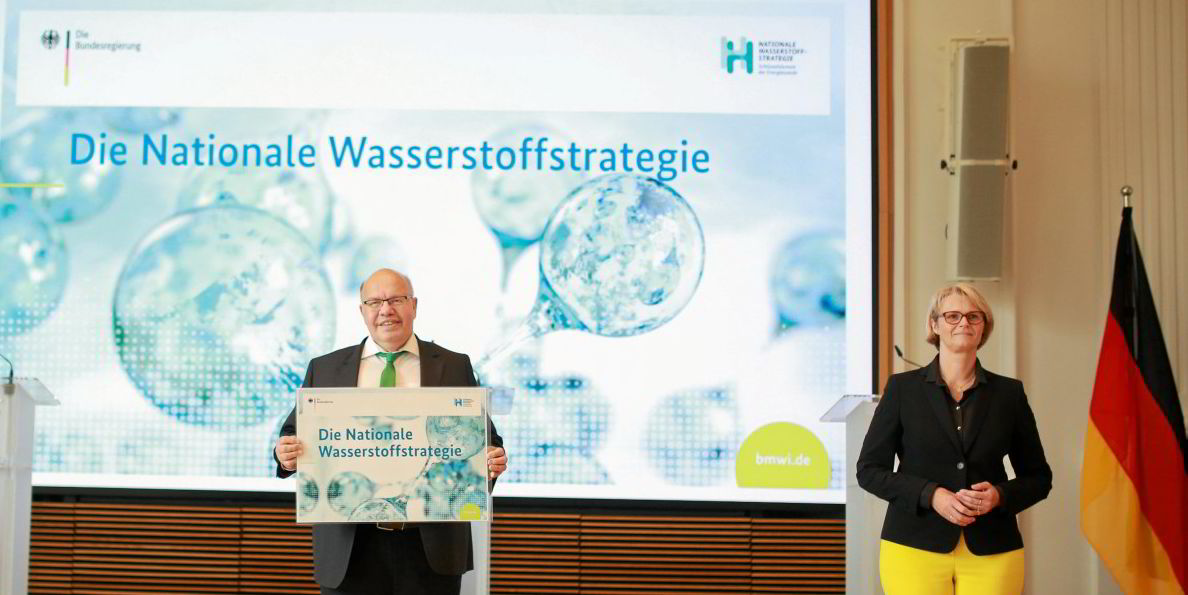
Germany to tap Australia for 'industrial scale' green hydrogen imports in funding pact planRead more
“From our point of view, Namibia has particularly good chances in this competition. We want to use them together.”
Hydrogen strategy
The deal with Namibia is part of Germany’s €9bn ($10.6bn) national hydrogen strategy that was presented last year and includes €2bn in support to green hydrogen projects in partner countries around the world, as Europe’s largest economy due to space restraints won’t be able to produce sufficient green H2 at home to meet expected demand.
Berlin last year signed a deal with Australia – one of the world’s most promising countries in the emerging global hydrogen economy – amid an effort to secure massive future imports of the green gas, as well as exports of electrolysers made in Germany.
Namibia, while not yet a renewables hotspot like Australia, also has very favourable conditions. The African nation is very sparsely populated with only only 2.5 million inhabitants, and boasts more than 3,500 hours of sun, plus strong winds.
Those conditions would enable production of green hydrogen via electrolysis at a price of €1.50-2.00 per kg ($1.76-2.34) – the cheapest in the world, according to Karliczek, who said the expected production prices in Namibia would be even more competitive than in renewable hydrogen front-runner countries Chile and Australia. Some analysts, however, have warned that pricing assumptions of green hydrogen mega-projects are based on over-optimistic assumptions.
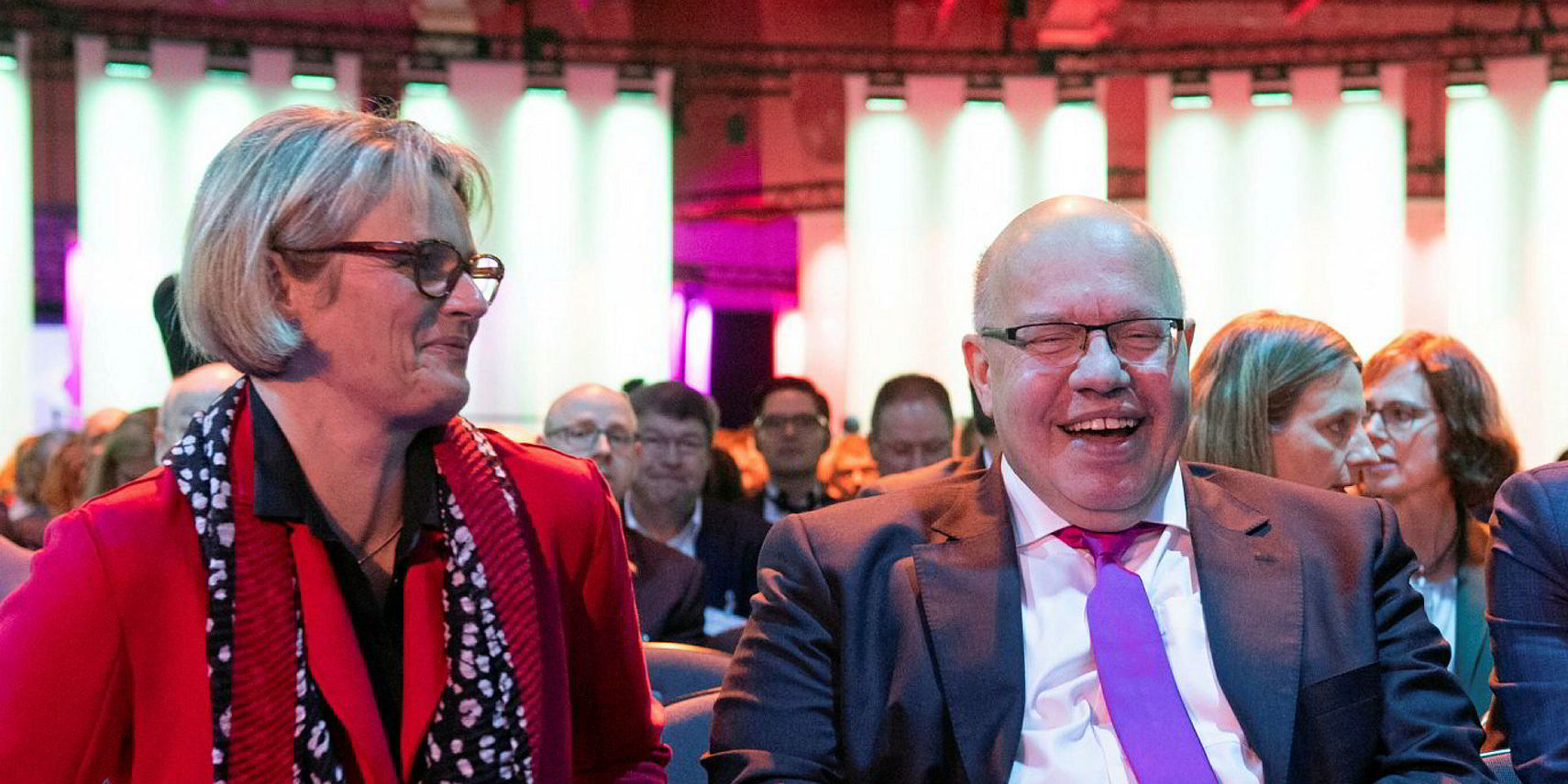
Germany targets massive green hydrogen output and imports in $10bn national strategyRead more
“The [German] National Hydrogen Council estimates that German industry alone, excluding refineries, will have a hydrogen requirement of 1.7 million tonnes per year by 2030, which will continue to increase thereafter,” Karliczek said.
“This demand forecast shows that we need large quantities and cheap kilo prices quickly. Namibia can deliver that.”
Namibia in November plans to present its own hydrogen strategy. But the country is also one of the driest on the African continent, creating a need for desalination plants in order to provide the water for the giant electrolysers necessary to produce large quantities of green H2 for export.
Germany plans to at first carry out a feasibility study, followed up by German-Namibian pilot projects and the training of local specialists for hydrogen.
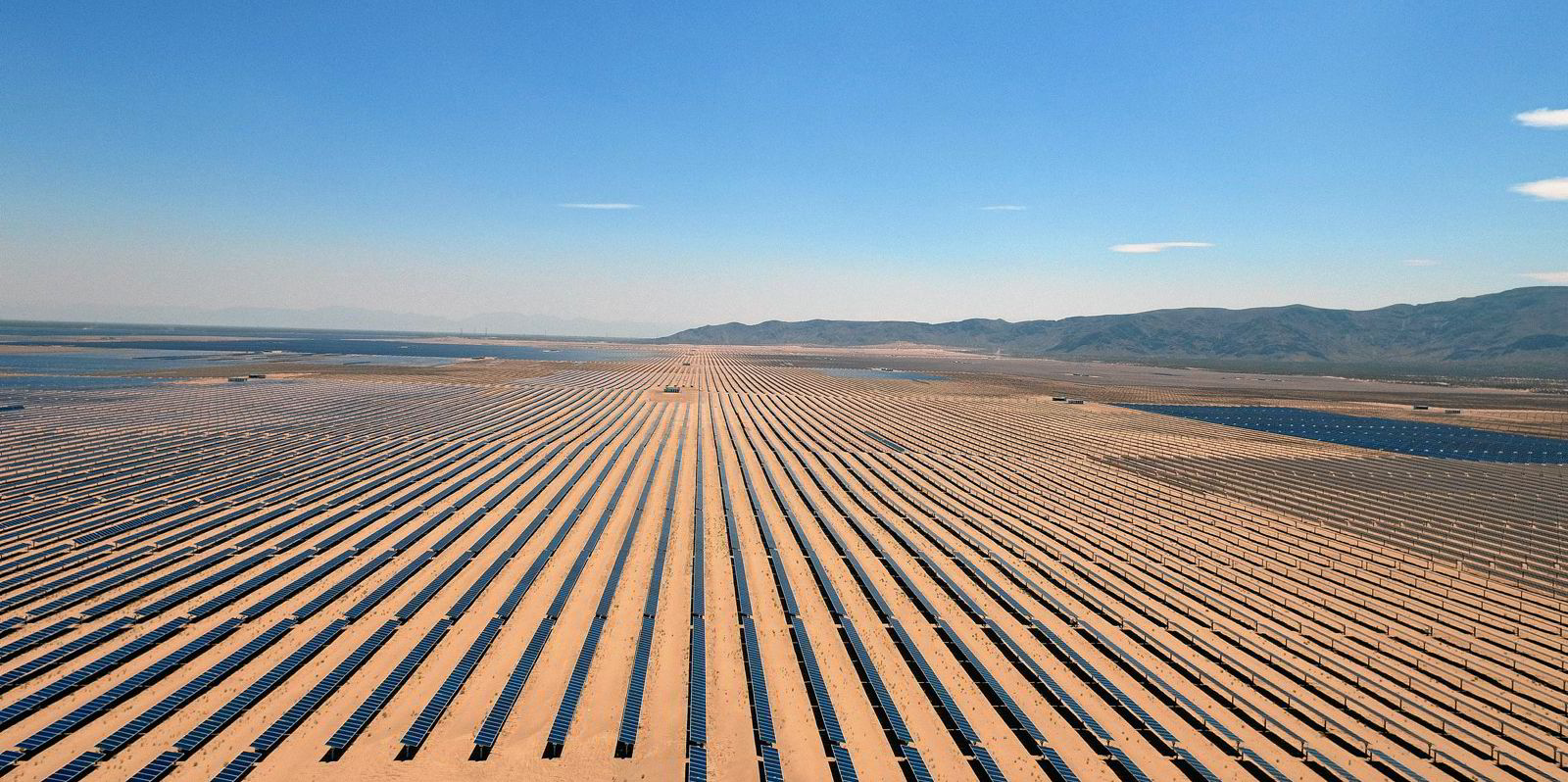
Giga-scale green hydrogen: 'Developers are being unrealistic about levelised costs'Read more
“The feasibility study aims to show the potential of a green hydrogen economy, including innovative seawater desalination, in Namibia and exports to Germany,” said Stefan Kaufmann, a German lawmaker from Karliczek’s Christian Democrats (CDU).
“Building on this, we want to test in pilot projects how green hydrogen can be generated and transported in Namibia.”
Vulnerable to climate change
Kandjoze added that Namibia is particularly prone to the consequences of climate change, and needs to act now.
“Namibia is particularly vulnerable to the consequences of climate change. Two thirds of our electricity comes from hydro-power, which depends on the rain and the rivers at Ruacana,” the head of the Namibian planning commission said.
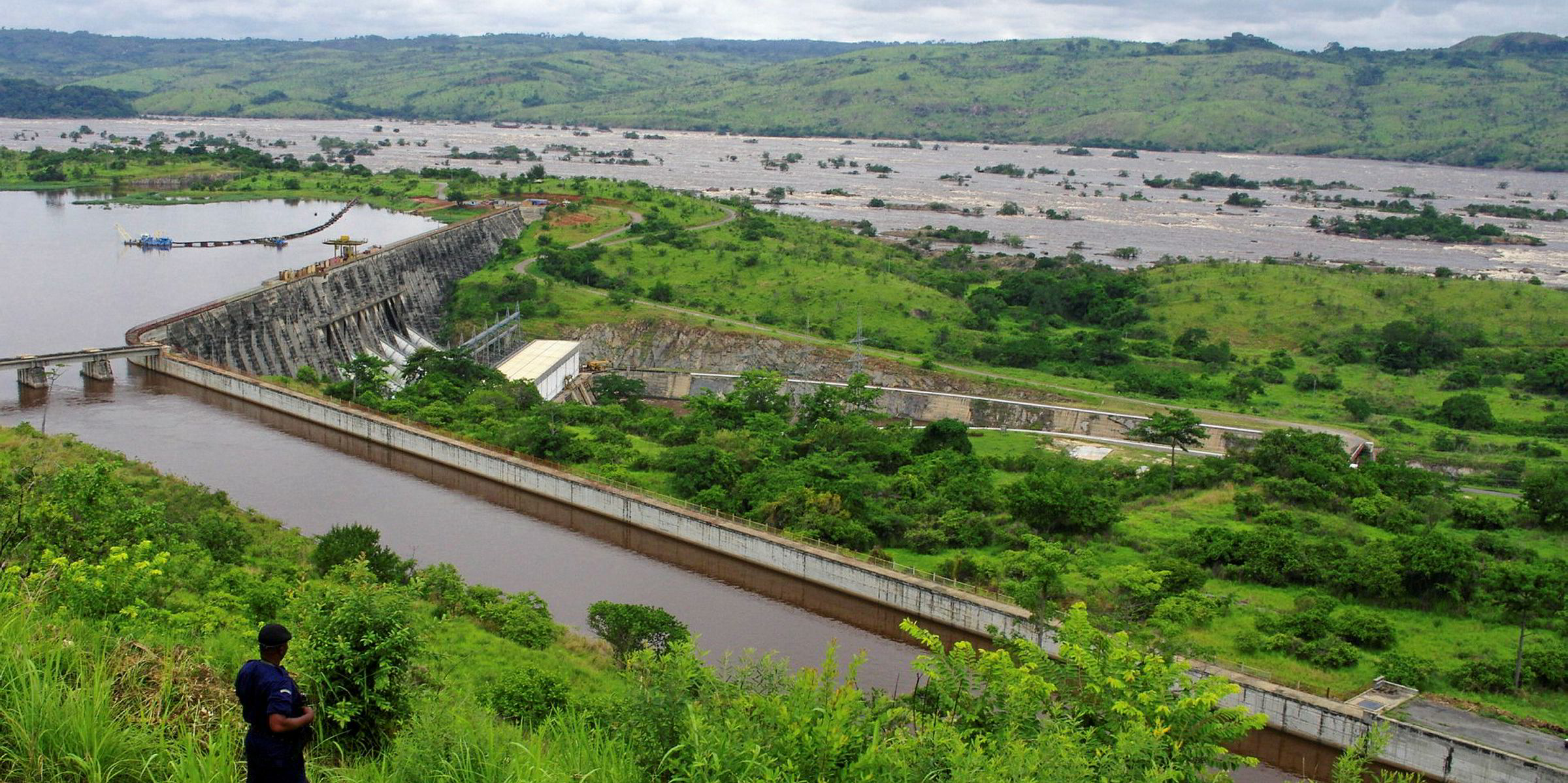
World's largest hydro dam 'could send cheap green hydrogen from Congo to Germany'Read more
“Twenty-three percent of our workforce depends on agriculture. Long periods of drought, as we have recently experienced, are only a harbinger of catastrophic conditions for many of our fellow citizens.”
The country hopes to be able to start with green hydrogen exports before 2025, after previously covering its own needs for renewable energy and green H2.
The hydrogen agreement comes in the wake of a recent reconstruction aid deal, which foresees payments of €1.1bn from Germany to Namibia in compensation for colonial crimes, although the funds are not officially called a reparation payment.
Namibia was a German colony between 1884 and 1915, during which Germany from 1904-07 massacred tens of thousands of Herero and Nama in the first genocide of the twentieth century. The country was later occupied by South Africa before it became independent in 1990
25 August 2021
By Bernd Radowitz
Germany plans to import huge volumes of what it claims will be the world's cheapest green hydrogen under a pact with Namibia that further widens a global dash to secure prime locations for H2 production linked to massive renewable power installations.
German science minister Anja Karliczek and Obeth Kandjoze, head of the Namibian planning commission, signed a joint communiqué of intent to build up the southern African nation's enormous solar and wind energy potential, and then ramp up its green hydrogen economy.
The science ministry will provide up to €40m ($47m) in support from Germany’s post-Covid economic stimulus programme for the partnership, Karliczek pledged.
“There is already a race around the world for the best hydrogen technologies and the best locations for hydrogen production,” she said.

Germany to tap Australia for 'industrial scale' green hydrogen imports in funding pact planRead more
“From our point of view, Namibia has particularly good chances in this competition. We want to use them together.”
Hydrogen strategy
The deal with Namibia is part of Germany’s €9bn ($10.6bn) national hydrogen strategy that was presented last year and includes €2bn in support to green hydrogen projects in partner countries around the world, as Europe’s largest economy due to space restraints won’t be able to produce sufficient green H2 at home to meet expected demand.
Berlin last year signed a deal with Australia – one of the world’s most promising countries in the emerging global hydrogen economy – amid an effort to secure massive future imports of the green gas, as well as exports of electrolysers made in Germany.
Namibia, while not yet a renewables hotspot like Australia, also has very favourable conditions. The African nation is very sparsely populated with only only 2.5 million inhabitants, and boasts more than 3,500 hours of sun, plus strong winds.
Those conditions would enable production of green hydrogen via electrolysis at a price of €1.50-2.00 per kg ($1.76-2.34) – the cheapest in the world, according to Karliczek, who said the expected production prices in Namibia would be even more competitive than in renewable hydrogen front-runner countries Chile and Australia. Some analysts, however, have warned that pricing assumptions of green hydrogen mega-projects are based on over-optimistic assumptions.

Germany targets massive green hydrogen output and imports in $10bn national strategyRead more
“The [German] National Hydrogen Council estimates that German industry alone, excluding refineries, will have a hydrogen requirement of 1.7 million tonnes per year by 2030, which will continue to increase thereafter,” Karliczek said.
“This demand forecast shows that we need large quantities and cheap kilo prices quickly. Namibia can deliver that.”
Namibia in November plans to present its own hydrogen strategy. But the country is also one of the driest on the African continent, creating a need for desalination plants in order to provide the water for the giant electrolysers necessary to produce large quantities of green H2 for export.
Germany plans to at first carry out a feasibility study, followed up by German-Namibian pilot projects and the training of local specialists for hydrogen.

Giga-scale green hydrogen: 'Developers are being unrealistic about levelised costs'Read more
“The feasibility study aims to show the potential of a green hydrogen economy, including innovative seawater desalination, in Namibia and exports to Germany,” said Stefan Kaufmann, a German lawmaker from Karliczek’s Christian Democrats (CDU).
“Building on this, we want to test in pilot projects how green hydrogen can be generated and transported in Namibia.”
Vulnerable to climate change
Kandjoze added that Namibia is particularly prone to the consequences of climate change, and needs to act now.
“Namibia is particularly vulnerable to the consequences of climate change. Two thirds of our electricity comes from hydro-power, which depends on the rain and the rivers at Ruacana,” the head of the Namibian planning commission said.

World's largest hydro dam 'could send cheap green hydrogen from Congo to Germany'Read more
“Twenty-three percent of our workforce depends on agriculture. Long periods of drought, as we have recently experienced, are only a harbinger of catastrophic conditions for many of our fellow citizens.”
The country hopes to be able to start with green hydrogen exports before 2025, after previously covering its own needs for renewable energy and green H2.
The hydrogen agreement comes in the wake of a recent reconstruction aid deal, which foresees payments of €1.1bn from Germany to Namibia in compensation for colonial crimes, although the funds are not officially called a reparation payment.
Namibia was a German colony between 1884 and 1915, during which Germany from 1904-07 massacred tens of thousands of Herero and Nama in the first genocide of the twentieth century. The country was later occupied by South Africa before it became independent in 1990
Alstom pioneers hydrogen mobility for rail in the Middle East and North Africa
Through innovations in electric transport and hydrogen fuel, Alstom aims to shape the future of the region’s mass transit and mobility for the better. In doing so, it remains dedicated to significantly reducing emissions, minimising land use and carbon footprint, and decarbonising rail transport
Through innovations in electric transport and hydrogen fuel, Alstom aims to shape the future of the region’s mass transit and mobility for the better. In doing so, it remains dedicated to significantly reducing emissions, minimising land use and carbon footprint, and decarbonising rail transport
August 29, 2021
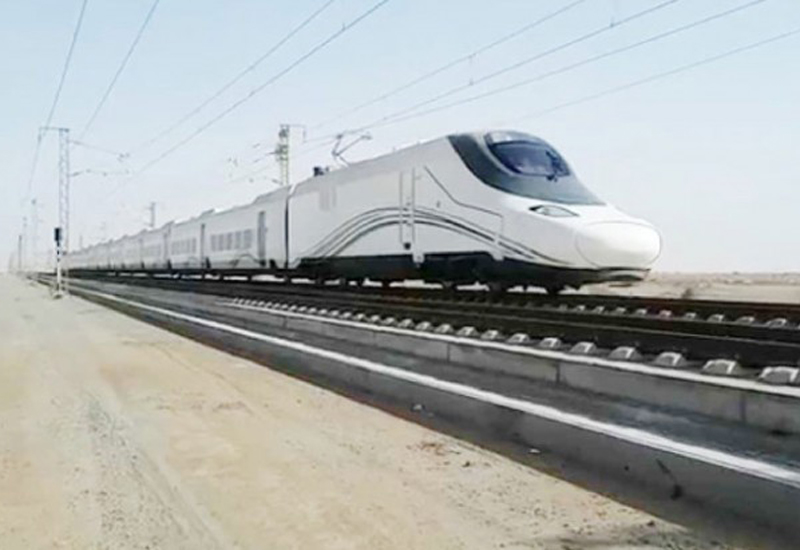

Saudi's 450km high-speed Haramain rail link to open soon
Hydrogen technologies and solutions in transport will play a very important role in transitioning to a cleaner more sustainable future accelerating the Middle East and North Africa Green Economy vision. Alstom, a global leader in rail transport and sustainable mobility, is working closely with many regional transportation authorities to ensure the most advanced and sustainable technology innovations are in place to safeguard the health, wellbeing, and mobility of communities across the Middle East and North Africa.
In line with the aim to facilitate a global transition to a low-carbon transport system, Alstom has pioneered several sustainable mobility solutions. The Coradia iLint™ is a perfect illustration for the commitment to designing and delivering innovative and environmentally friendly solutions making Alstom the first company to have developed and put into operation hydrogren trains.
The region’s government is taking major strides towards reducing greenhouse gas emissions, cutting down on the use of fossil fuels, and decarbonising transportation.
Supporting the UAE Vision 2021, the National Agenda focuses on improving the quality of air, preserving water resources, increasing the contribution of clean energy, and implementing green growth plans. Consequently, outlining Dubai’s commitment to transitioning to a green economy, the leadership inaugurated the Green Hydrogen Project at the Mohammed bin Rashid Al Maktoum Solar Park – a first of its kind project in the MENA region that aims to produce eco-friendly hydrogen using renewable energy.
Known as a global driver of innovation towards carbon neutrality in rail transport – Alstom places a huge focus on greener and smarter mobility solutions. Alstom has been the first company worldwide in 2018 to introduce a new regional train based on hydrogen fuel cells and batteries. Most recently, Alstom completed the acquisition of Helion Hydrogen Power. This promising, innovation-driven company, a 100% subsidiary of AREVA Energies Renouvelables, is specialised in high power fuel cells, thus complementing Alstom’s expertise in hydrogen technology.
“At Alstom, we are proud to be contributing to promoting the use of hydrogen as our aim is to position hydrogen as a strategic factor in the energy transition, as we are convinced it will bring about the change in road and rail transport – towards a clean and ultimately emission-free energy system,” says Mama Sougoufara, Managing Director, Alstom MENAT.
“The key advantage of the technology is that it is emissions-free when used to power a train (the only by-product is water) and is zero-emission throughout its full lifecycle if produced from renewable energy. The railway industry is already one of the cleanest sectors in the field of transport. As a dedicated and long-standing partner of the region’s transportation and mobility development, Alstom will continue to play an integral role in improving the environmental performance of rail across the region.”
Alstom acknowledges its responsibilities to further decarbonise mobility and thus is committed to accompany its clients in this major transition by offering efficient alternatives to diesel trains.
Through innovations in electric transport and hydrogen fuel, Alstom aims to shape the future of the region’s mass transit and mobility for the better. In doing so, it remains dedicated to significantly reducing emissions, minimising land use and carbon footprint, and decarbonising rail transport.
Hydrogen technologies and solutions in transport will play a very important role in transitioning to a cleaner more sustainable future accelerating the Middle East and North Africa Green Economy vision. Alstom, a global leader in rail transport and sustainable mobility, is working closely with many regional transportation authorities to ensure the most advanced and sustainable technology innovations are in place to safeguard the health, wellbeing, and mobility of communities across the Middle East and North Africa.
In line with the aim to facilitate a global transition to a low-carbon transport system, Alstom has pioneered several sustainable mobility solutions. The Coradia iLint™ is a perfect illustration for the commitment to designing and delivering innovative and environmentally friendly solutions making Alstom the first company to have developed and put into operation hydrogren trains.
The region’s government is taking major strides towards reducing greenhouse gas emissions, cutting down on the use of fossil fuels, and decarbonising transportation.
Supporting the UAE Vision 2021, the National Agenda focuses on improving the quality of air, preserving water resources, increasing the contribution of clean energy, and implementing green growth plans. Consequently, outlining Dubai’s commitment to transitioning to a green economy, the leadership inaugurated the Green Hydrogen Project at the Mohammed bin Rashid Al Maktoum Solar Park – a first of its kind project in the MENA region that aims to produce eco-friendly hydrogen using renewable energy.
Known as a global driver of innovation towards carbon neutrality in rail transport – Alstom places a huge focus on greener and smarter mobility solutions. Alstom has been the first company worldwide in 2018 to introduce a new regional train based on hydrogen fuel cells and batteries. Most recently, Alstom completed the acquisition of Helion Hydrogen Power. This promising, innovation-driven company, a 100% subsidiary of AREVA Energies Renouvelables, is specialised in high power fuel cells, thus complementing Alstom’s expertise in hydrogen technology.
“At Alstom, we are proud to be contributing to promoting the use of hydrogen as our aim is to position hydrogen as a strategic factor in the energy transition, as we are convinced it will bring about the change in road and rail transport – towards a clean and ultimately emission-free energy system,” says Mama Sougoufara, Managing Director, Alstom MENAT.
“The key advantage of the technology is that it is emissions-free when used to power a train (the only by-product is water) and is zero-emission throughout its full lifecycle if produced from renewable energy. The railway industry is already one of the cleanest sectors in the field of transport. As a dedicated and long-standing partner of the region’s transportation and mobility development, Alstom will continue to play an integral role in improving the environmental performance of rail across the region.”
Alstom acknowledges its responsibilities to further decarbonise mobility and thus is committed to accompany its clients in this major transition by offering efficient alternatives to diesel trains.
Through innovations in electric transport and hydrogen fuel, Alstom aims to shape the future of the region’s mass transit and mobility for the better. In doing so, it remains dedicated to significantly reducing emissions, minimising land use and carbon footprint, and decarbonising rail transport.
No comments:
Post a Comment